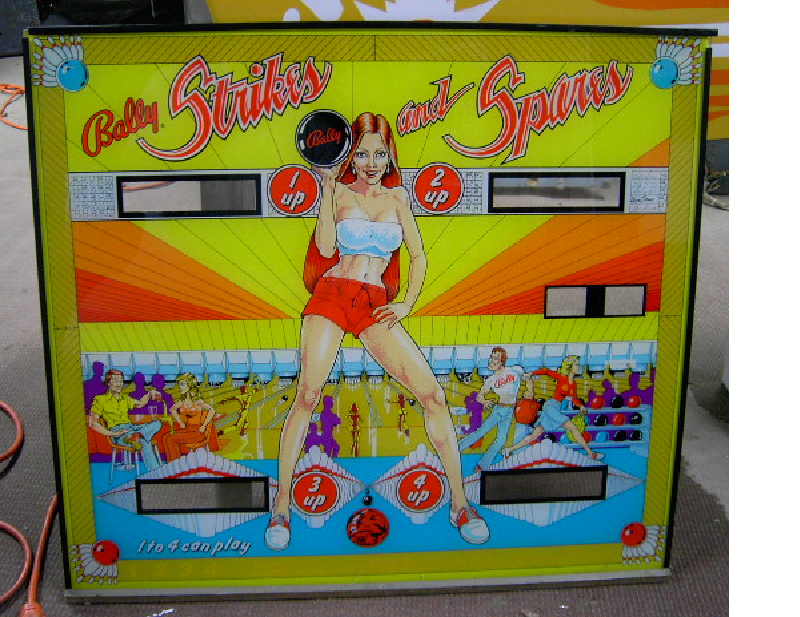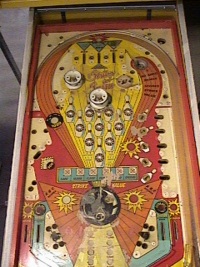Section 1: Electronics Continued
Problem #3: Flippers didn’t work
The flipper relay would click on start up so I knew that wasn’t the problem. I checked the continuity of all wires from the flipper to the driver board and they were OK. The left flipper ended up having a bad EOS switch. The right flipper ended up having a dead coil. After fixing the EOS switch and replacing the coil both flippers worked. I also put new coil sleeves in while doing this.
Problem #4: Slingshot coils did not work
Neither sling worked. I tested continuity on the wires and this was fine. I then manually grounded the coil by touching a wire to the non-banded side of the coil and to the ground plane in the backbox. Both coils fired so I knew that they had power. However, when I tried to manually fire the coils by grounding the transistors, they did not fire. So, I replaced the transistors on the driver board and the slings worked.
Problem #5: At least 23 switched lights did not work
The difficulty here was that with so many lights not working, it was hard to determine if the transistors, lamp board connectors, or lamp sockets were bad. Also, it was possible that more than one problem existed for each bad lamp.
The first thing I did was install all working lights. I then used the game diagnostics and made a chart of the non-working lights. I made a chart with columns for the lamp, the corresponding transistor, the decoder chip, and connector and pin for each light. I also made a column for the suspected problem. Next, I used a spare light board to see if this made a difference. A couple of lights now worked. This eliminated the lamp socket from being an issue on these lights. The problem could have still been a connector or transistor. With the original light board out of the game, I then tested each of the transistors. I found that four of them were bad and that one was missing! After replacing these, I reinstalled this board. I now had nineteen non-working lamps. I then tested these lamps again by manually grounding the transistor. I found that there were two more transistors that were bad that I missed during my out of game testing. Out came the board and I replaced these. Actually, one was one I had already replaced with a transistor from a spare board I use for parts. So, now I was down to 18 lamps not working. I next checked the sockets and several of these were bad. Ultimately, I replaced 12 lamp sockets to get all of the lamps working.
One tip here. I’ve always found it difficult to solder the lamp sockets with the playfield in an upright position. Since the plastics were off, I disconnected the wires from the playfield to the backbox and then turned the playfield over and laid it in the cabinet. This allowed it to lay flat and was well supported without damaging anything. This made the lamp replacement a whole lot easier.
Problem #6: Only two displays worked.
I just used some extra displays that I had laying around to fix these. When buying a "lot" of 19 games, there are usually spare parts you can cannibalize until you get to the final games being restored.
Problem #7: There was no knocker.
I installed a new knocker in the head. Fortunately, I had the correct coil on hand along with the necessary hardware.


